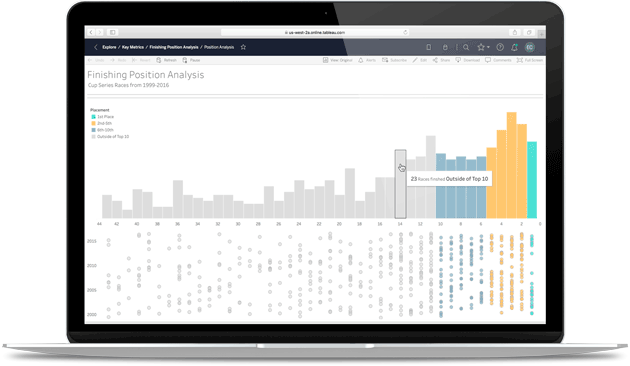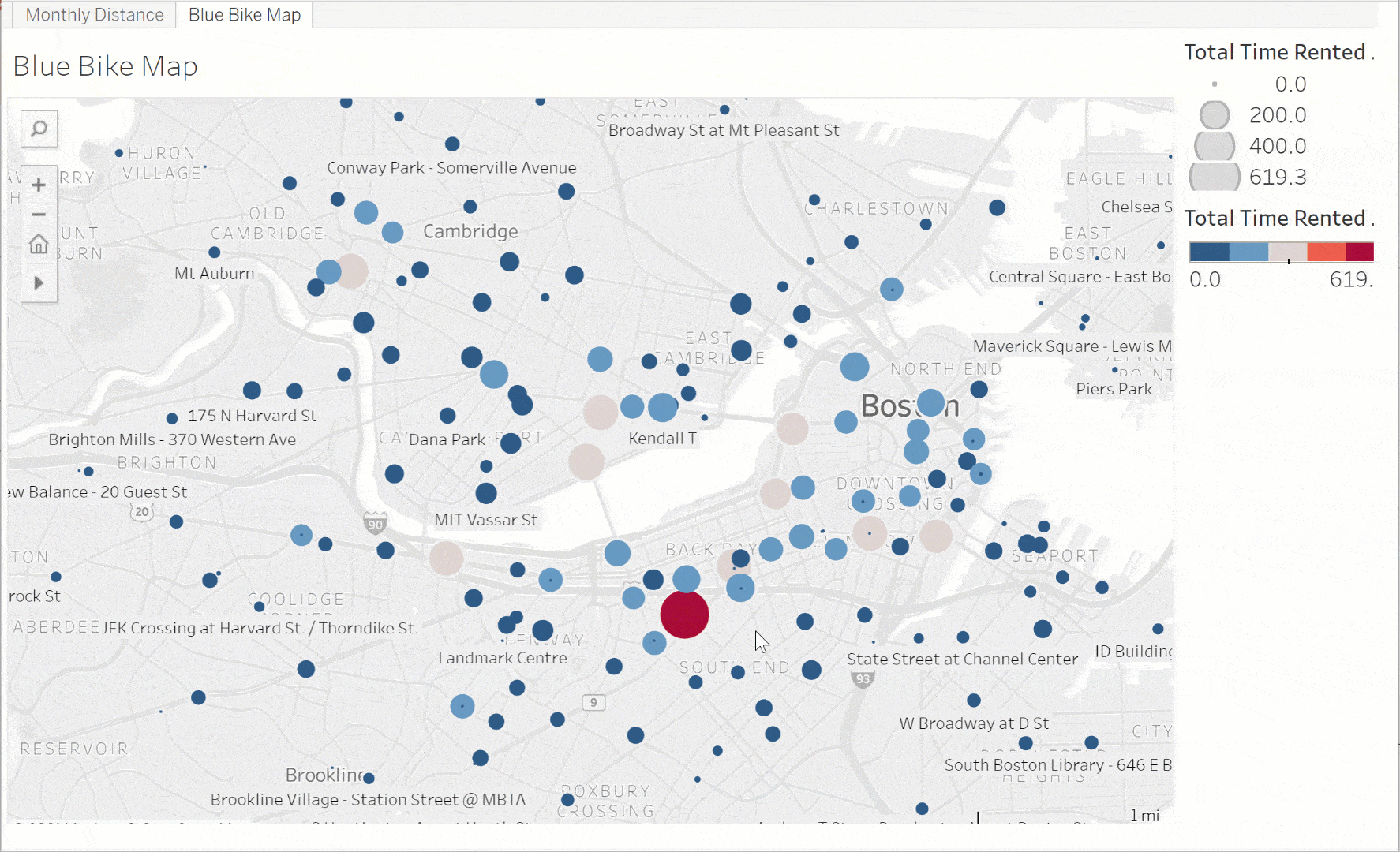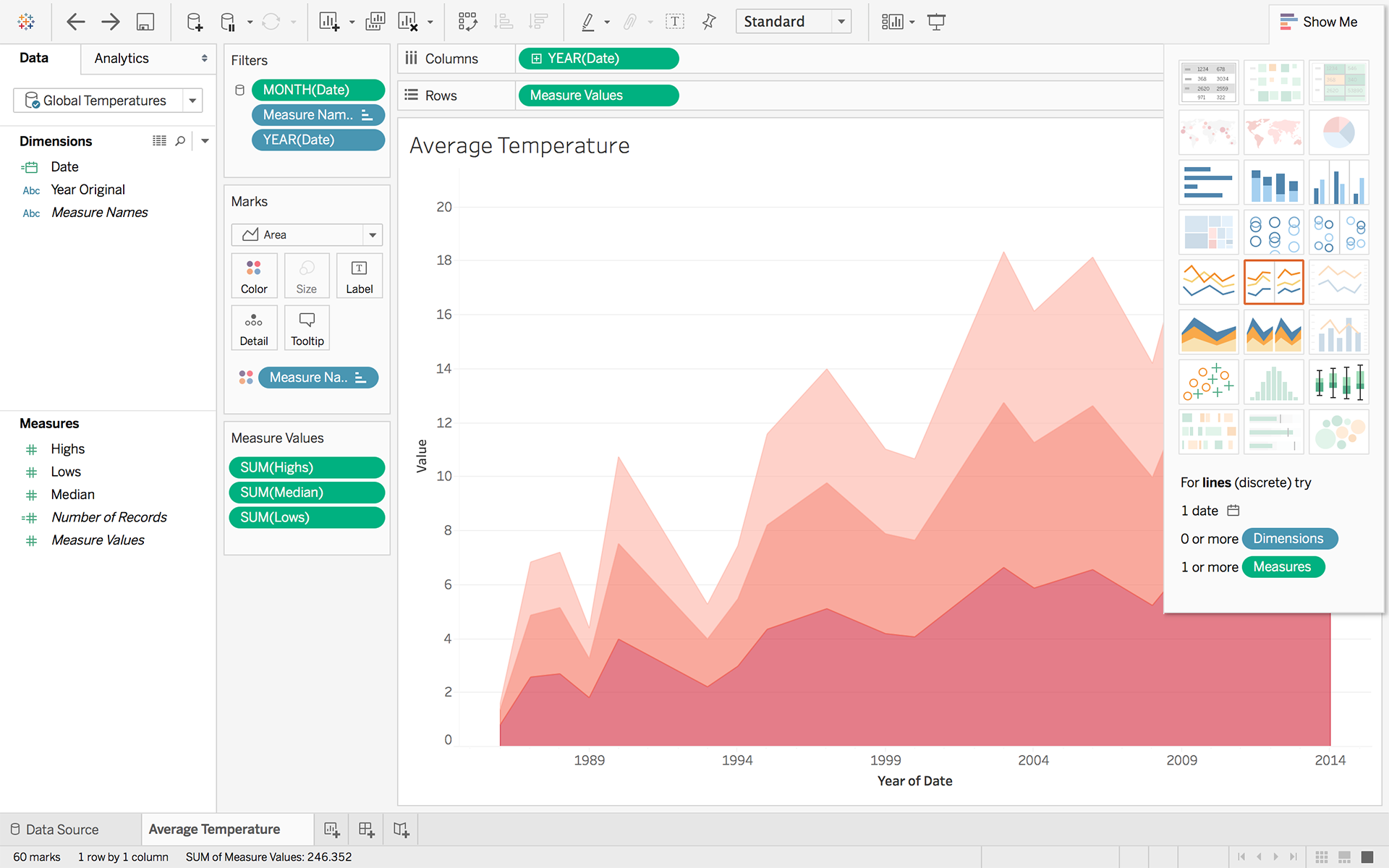- Tableau helps people see and understand data. Our visual analytics platform is transforming the way people use data to solve problems. See why organizations of all sizes trust Tableau to help them be more data-driven.
- Tableau software is one of the fastest growing data visualization tools which is currently being used in the BI industry. It is the best way to change or transform the raw set of data into an easily understandable format with zero technical skills and coding knowledge.
- Tableau Tutorial
Tableau is easy-to-use business intelligence software used for data analysis, providing visual tools to help you see and understand your data. You can connect to data in a few clicks, then use drag and drop tools to visualize and create interactive dashboards that can then be shared with Tableau. Aug 07, 2021 Tableau software is one of the fastest growing data visualization tools which is currently being used in the BI industry. It is the best way to change or transform the raw set of data into an easily understandable format with zero technical skills and coding knowledge. Tableau Software does not support expanded analytics such as Box plots, network graphs, tree- maps, heat-maps, 3D-scatter plots, Profile Charts or data relationships tool which allow users to mine data for relationships like another data visualization software does.
Tableau Desktop
- Tableau Data Sources
- Tableau Worksheets
- Tableau Calculations
- Tableau Sort & Filters

- Tableau Charts
- Tableau Advanced
- Tableau Useful Resources

- Selected Reading
Tableau is a Business Intelligence tool for visually analyzing the data. Users can create and distribute an interactive and shareable dashboard, which depict the trends, variations, and density of the data in the form of graphs and charts. Telecharger skype ancienne version 2009. Tableau can connect to files, relational and Big Data sources to acquire and process data. The software allows data blending and real-time collaboration, which makes it very unique. It is used by businesses, academic researchers, and many government organizations for visual data analysis. It is also positioned as a leader Business Intelligence and Analytics Platform in Gartner Magic Quadrant.
This tutorial is designed for all those readers who want to create, read, write, and modify Business Intelligence Reports using Tableau. In addition, it will also be quite useful for those readers who would like to become a Data Analyst or a Data Scientist.
Before proceeding with this tutorial, you should have a basic understanding of Computer Programming terminologies and Data analysis. You should also have some knowledge on various types of graphs and charts. Familiarity with SQL will be an added advantage.
- Tableau Tutorial
- Tableau Data Sources

- Tableau Worksheets
- Tableau Calculations
- Tableau Sort & Filters
- Tableau Charts
- Tableau Advanced
- Tableau Useful Resources
- Selected Reading
An operator is a symbol that tells the compiler to perform specific mathematical or logical manipulations. Tableau has a number of operators used to create calculated fields and formulas.
Following are the details of the operators that are available and the order (precedence) of operations.
Types of Operator
- General Operators
- Arithmetic Operators
- Relational Operators
- Logical Operators
General Operators
Following table shows the general operators supported by Tableau. These operators act on numeric, character, and date data types.
| Operator | Description | Example |
|---|---|---|
| +(addition) | Adds two numbers. Concatenates two strings. Adds days to dates. | 7 + 3 Profit + Sales 'abc' + 'def' = 'abcdef' #April 15, 2004# + 15 = #April 30, 2004# |
| –(subtraction) | Subtracts two numbers. Subtracts days from dates. | -(7+3) = -10 #April 16, 2004# - 15 = #April 1, 2004# |
Tableau Periodique
Arithmetic Operators
Following table shows the arithmetic operators supported by Tableau. These operators act only on numeric data types.
| Operator | Description | Example |
|---|---|---|
| *(Multiplication) | Numeric multiplication | 23*2 = 46 |
| /(Division) | Numeric division | 45/2 = 22.5 |
| %(modulo) | Reminder of numeric division | 13 % 2 = 1 |
| ^(power) | Raised to the power | 2^3 = 8 |
Comparison Operators
Following table lists the comparison operators supported by Tableau. These operators are used in expressions. Each operator compares two numbers, dates, or strings and returns a Boolean (TRUE or FALSE). Booleans themselves, however, cannot be compared using these operators.
| Operator | Description | Example |
|---|---|---|
| = = or = (Equal to) | Compares two numbers or two strings or two dates to be equal. Returns the Boolean value TRUE if they are, else returns false. | ‘Hello’ = ‘Hello’ 5 = 15/ 3 |
| != or <> (Not equal to) | Compares two numbers or two strings or two dates to be unequal. Returns the Boolean value TRUE if they are, else returns false. | ‘Good’ <> ‘Bad’ 18 != 37 / 2 |
| > (Greater than) | Compares two numbers or two strings or two dates where the first argument is greater than second. Returns the boolean value TRUE if it is the case, else returns false. | [Profit] > 20000 [Category] > ‘Q’ [Ship date] > #April 1, 2004# |
| < (Less than) | Compares two numbers or two strings or two dates where the first argument is smaller than second. Returns the boolean value TRUE if it is the case, else returns false. | [Profit] < 20000 [Category] < ‘Q’ [Ship date] < #April 1, 2004# |
Logical Operators
Tableau Training
Following table shows the logical operators supported by Tableau. These operators are used in expressions whose result is a Boolean giving the output as TRUE or FALSE.
| Operator | Description | Example |
|---|---|---|
| AND | If the expressions or Boolean values present on both sides of AND operator is evaluated to be TRUE, then the result is TRUE. Else the result is FALSE. | [Ship Date] > #April 1, 2012# AND [Profit] > 10000 |
| OR | If any one or both of the expressions or Boolean values present on both sides of AND operator is evaluated to be TRUE, then the result is TRUE. Else the result is FALSE. | [Ship Date] > #April 1, 2012# OR [Profit] > 10000 |
| NOT | This operator negates the Boolean value of the expression present after it. | NOT [Ship Date] > #April 1, 2012# |
Operator Precedence

The following table describes the order in which operators are evaluated. The top row has the highest precedence. Operators on the same row have the same precedence. If two operators have the same precedence, they are evaluated from left to right in the formula. Also parentheses can be used. The inner parentheses are evaluated before the outer parentheses.
| Precedence | Operator |
|---|---|
| 1 | –(negate) |
| 2 | ^(power) |
| 3 | *, /, % |
| 4 | +, – |
| 5 | , >, <, >=, <=, != |
| 6 | NOT |
| 7 | AND |
| 8 | OR |